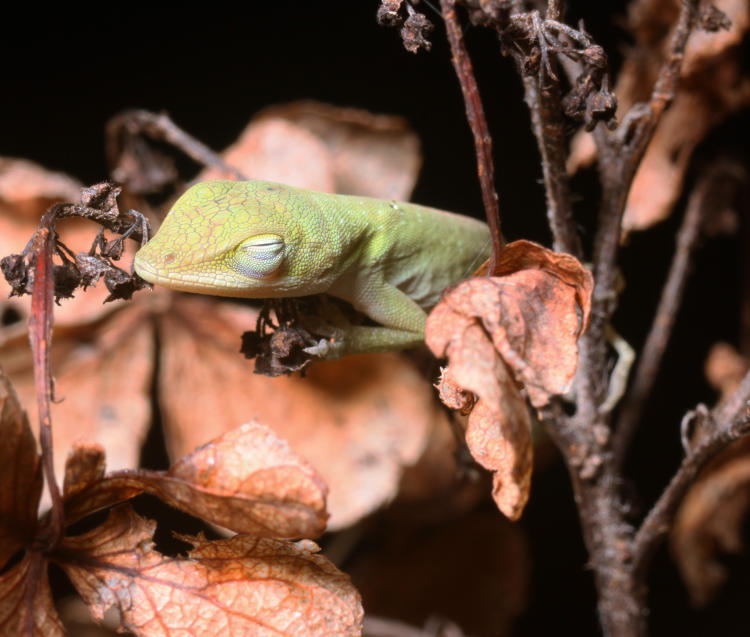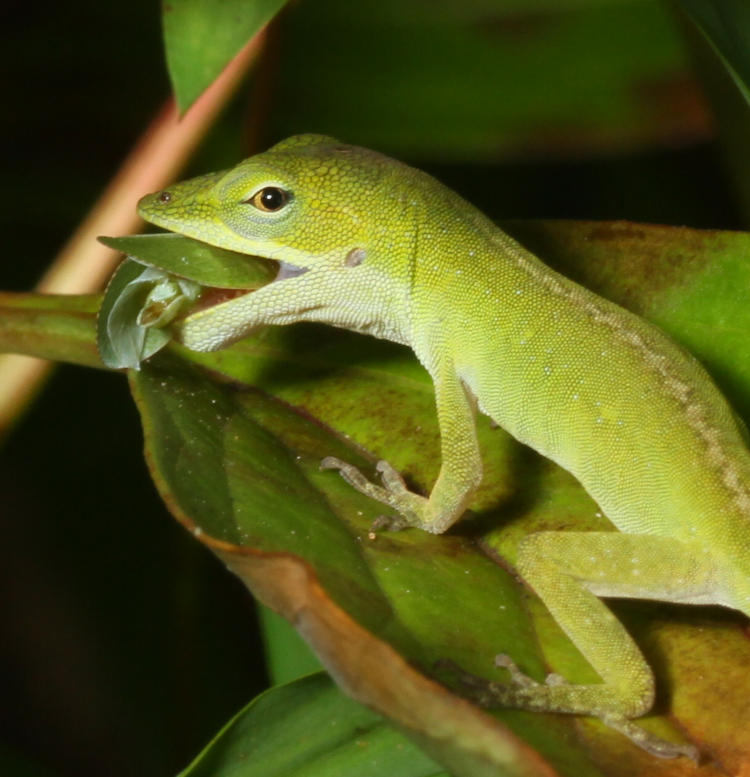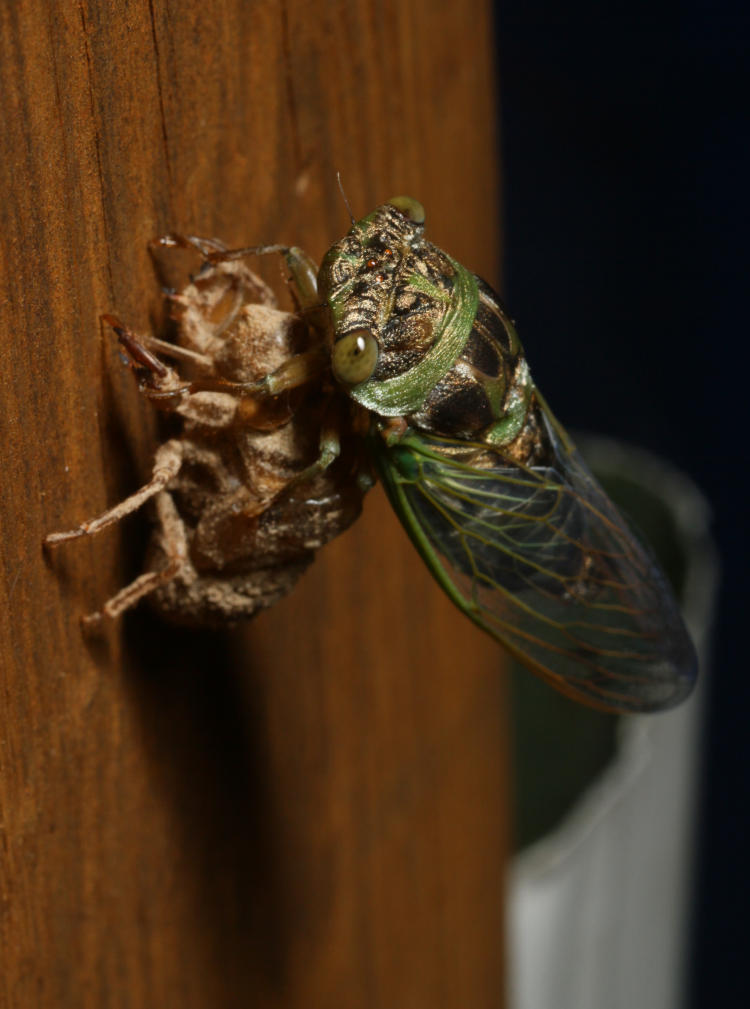
Well, okay, they’re not that old, but all of the images here were taken before we left on the trip last week, so ranging from seven to ten days ago – you define it as you see fit. Most of these I sat on because I had recently done the exact same subjects and wanted to space it out with some other topics, and we’ve done that now so it’s a go.
Above we have another image of a juvenile Carolina anole (Anolis carolinensis) snoozing on the old oak-leaf hydrangea (Hydrangea quercifolia) blooms, a favorite spot for a while. Like the green treefrogs, the anoles seem to favor one spot for a few days, then move on, but even our cats do that. Meanwhile, I’ve been sleeping on the same aide of the same bed for 12 years or so, with the exception of that time The Girlfriend was ill, which confused the hell out of Kaylee (“She’s on the other side, dumbass – she’s right over there in plain sight!”)
Another on the same plant one evening was in a position that allowed me to slip my measuring scale into the frame, so you can understand their diminutive size.

The anole saw me doing it and started to move off, then paused, and I could reposition the scale for a few frames, then remove it and all was hunky-dory. Of course, you need to be familiar with metric to get the right impression, but we should have switched over decades ago anyway so, no sympathy.
Somewhere around there we discovered that there are at least three now on that same hydrangea, while some suspicious movement in the front garden might have indicated a second one there. This is fine by me – the more the merrier.
A day earlier, I caught the spooky one (?) in the front garden in possession of a meal.

That’s a mere leafhopper crammed into its gullet, and the anole was already fleeing our presence when we spotted it, so I didn’t really have the chance to do more than a couple frames – certainly not any video. Had I spooked it any more, it likely would have just dropped the meal, so I let it be this time. I’m inclined to say that its prey is ‘typical’ leafhopper size, and it is – for this region. But since I can’t vouch for how big or small common leafhoppers may get anyplace else, this description may be meaningless. Overall, it was about the same size as the one alongside the scale up there, so we’re going with that.
I was a little late for this next subject.

This annual cicada (genus Neotibicen) had emerged from that old exoskeleton over an hour earlier, judging from the positions and fully-dried nature of the wings, so I was far too late to get any of the action, but I’ve captured the entire sequence before and I probably wouldn’t have bothered anyway. I should have changed the flash angle a little to show the exoskeleton better, but oh well.
One last.

We have at least three green frogs (Lithobates clamitans) living in the backyard pond, one absolutely huge – this is not that one. It’s also completely on the opposite side of the yard from the pond, what would seem to be a big trek for a small species, though it really isn’t; I just expect to see them closer to the water. However, this region was home to a lot more wood roaches, and so I imagine those provided easy and plentiful meals. I got extremely lucky in that the frog, confused by the headlamp and far from an easy escape into the water, stayed put as I stretched out prone on the ground right in front of it for this shot, and even re-angled the flash for better lighting. That hump over the head is actually the frog’s pelvis a bit further back – they really can stick up a bit. In size, this specimen is many times larger than the anoles (whose heads might be about as wide as the frog’s eyes) and could possibly have made a meal of the cicada. As I said, it wasn’t the largest by far – that one could probably eat mice. There are never any wolf spiders found in the backyard anymore, and I’m almost certain these guys are the reason why.
That’s all for now, but I’ll have more before too long, I’m sure.



















































